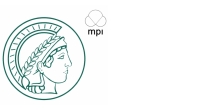
Andrea Musacchio (born 1964) graduated in Biology from the Tor Vergata University of Rome in 1990, working for his undergraduate degree with Prof. Giovanni Cesareni on the development of phage display libraries. Musacchio later moved to the European Molecular Biology Laboratory in Heidelberg to carry out his PhD work in the area of biochemistry and structural biology under the supervision of the late Dr. Matti Saraste. After receiving his PhD title from the University of Heidelberg early in 1995, Musacchio moved to the Harvard Medical School to work as a postdoctoral fellow in the laboratory of Prof. Stephen C. Harrison, supported by Human Frontier Science Program and the American Cancer Society postdoctoral fellowships. In Boston, Musacchio worked on the structural characterization by X-ray crystallography and electron microscopy of proteins implicated in trafficking of membrane and proteins in cells. Late in 1999, Musacchio gained independence at the European Institute of Oncology in Milan, where he started directing a research group investigating the molecular mechanisms of mitosis using a combination of structural, biochemical, and cell biological methods. In 2011, Musacchio moved to Dortmund to direct the Department of Mechanistic Cell Biology at the Max Planck Institute of Molecular Physiology. In 2012, he received an honorary professorship at the University of Duisburg-Essen.
Musacchio is the author of approximately 130 research papers. The scientific interest of the Musacchio laboratory is the process of cell division. In particular, the laboratory studies the mitotic checkpoint and its crucial role in ensuring that chromosome segregation during mitosis is accurate, i.e that it occurs without loss or gain of chromosomes in the daughter cells. This pathway operates at kinetochores, cellular structures that mediate the capture of microtubules during preparation for cell division. The overarching aim of the laboratory is to reconstitute kinetochore-microtubule attachment and its feedback control in vitro entirely with purified components. The most characteristic mark of the Musacchio laboratory is the conjugation of diverse approaches, including biochemistry, structural biology, and cell biology.
1. Petrovic A, Keller J, Liu Y, Overlack K, John J, Dimitrova Y, Jenni S, van Gerwen S, Stege P, Wohlgemuth S, Rombaut P, Herzog F, Harrison SC, Vetter IR & Musacchio A (2016) Structure of the MIS12 complex and molecular basis of its interaction with CENP-C at human kinetochores. Cell, in press.
2. Weir JR, Faesen AC, Klare K, Petrovic A, Basilico F, Fischböck J, Pentakota S, Keller J, Pesenti ME, Pan D, Vogt D, Wohlgemuth S, Herzog F & Musacchio A (2016) Insights from biochemical reconstitution into the architecture of human kinetochores. Nature 537:249-253. doi: 10.1038/nature19333.
3. Klare K, Weir JR, Basilico F, Zimniak T, Massimiliano L, Ludwigs N, Herzog F & Musacchio A (2015) CENP-C is a blueprint for constitutive centromere-associated network assembly within human kinetochores. J Cell Biol. 210:11-22. jcb.201412028.
4. Overlack K, Primorac I, Vleugel M, Krenn V, Maffini S, Hoffmann I, Kops GJ & Musacchio A (2015) A molecular basis for the differential roles of Bub1 and BubR1 in the spindle assembly checkpoint. Elife 4:e05269. doi: 10.7554/eLife.05269.
5. Petrovic A, Mosalaganti S, Keller J, Mattiuzzo M, Overlack K, Krenn V, De Antoni A, Wohlgemuth S, Cecatiello V, Pasqualato S, Raunser S & Musacchio A (2014) Modular Assembly of RWD Domains on the Mis12 Complex Underlies Outer Kinetochore Organization. Mol Cell 53:591-605. doi: 10.1016/j.molcel.2014.01.019.

